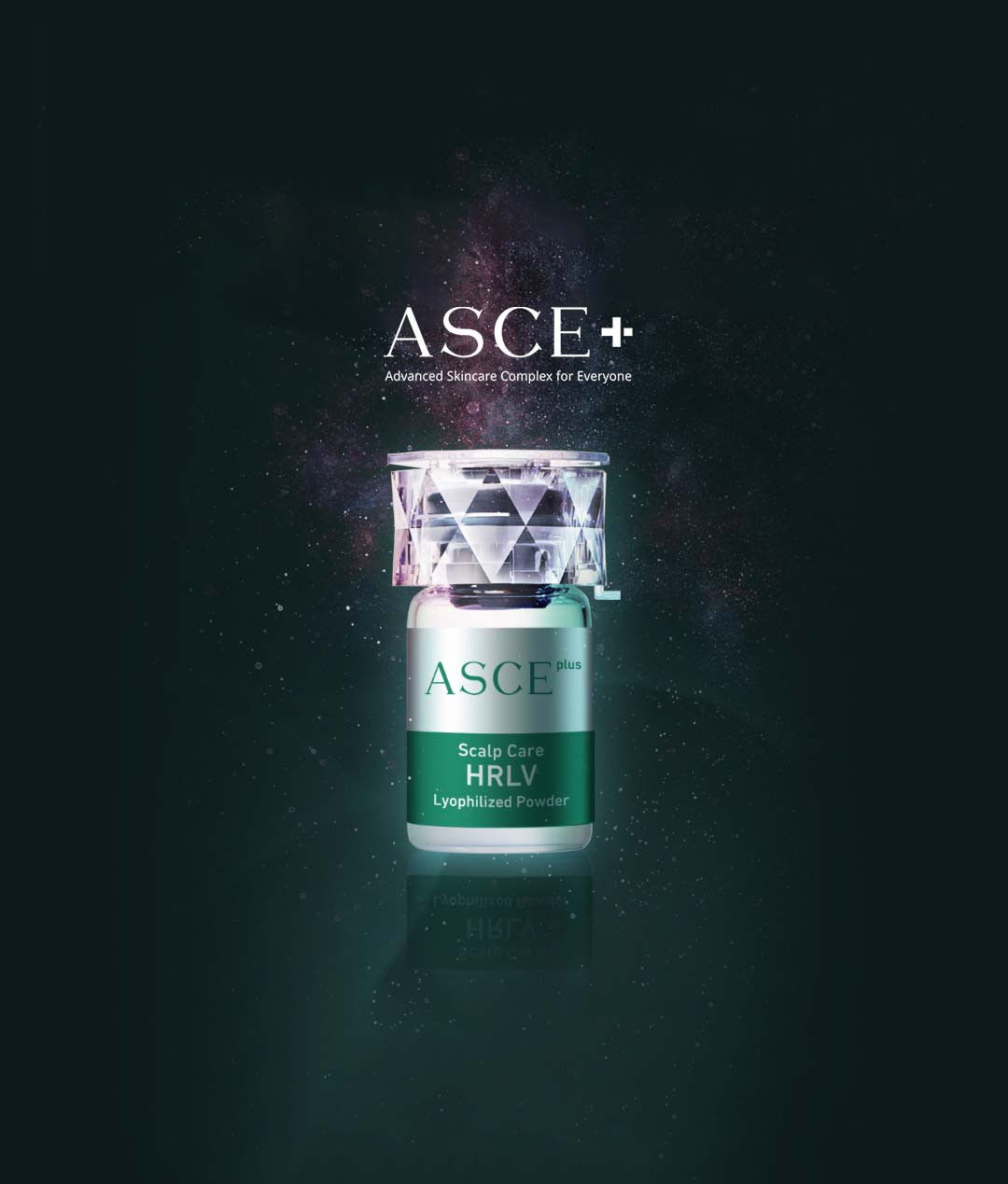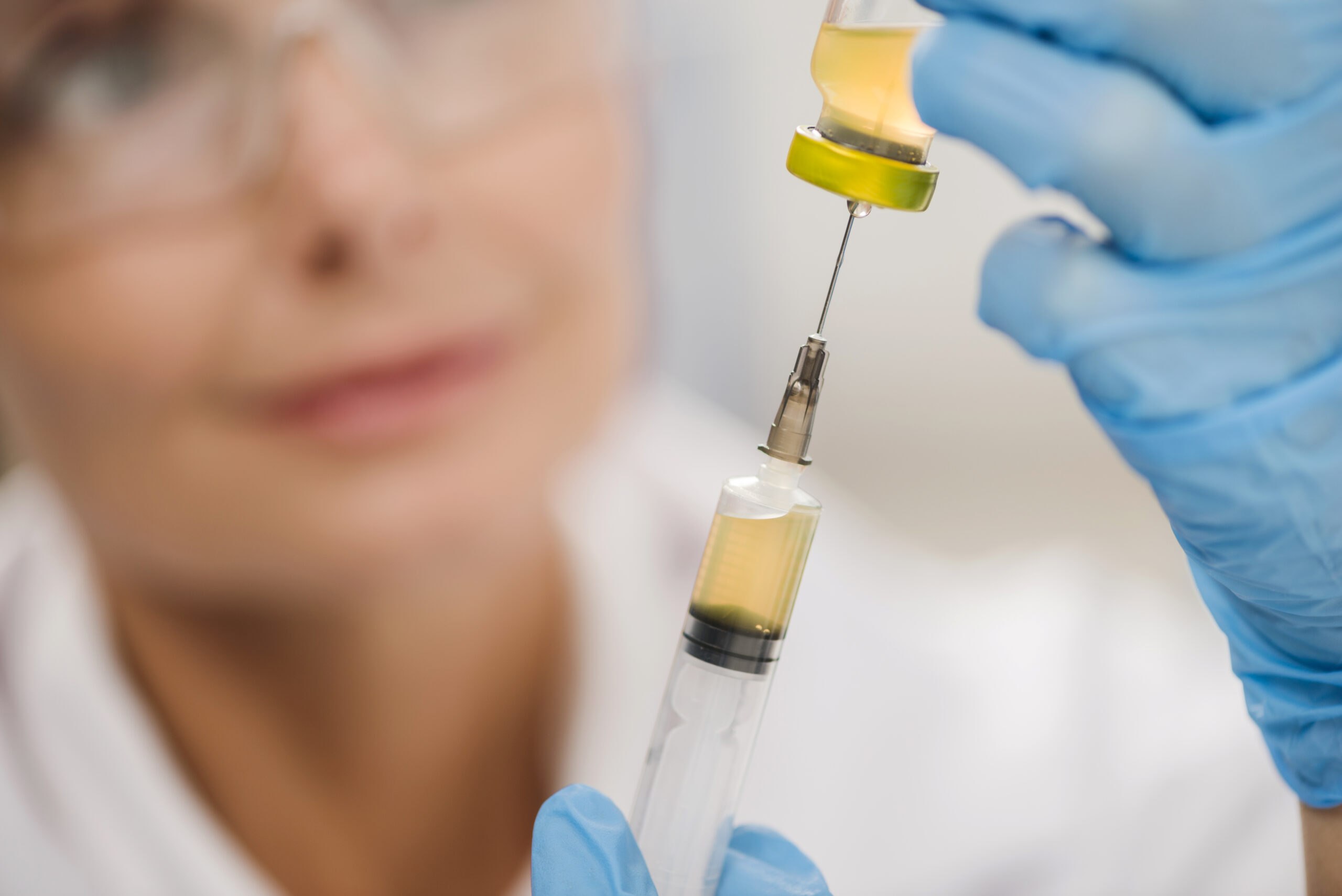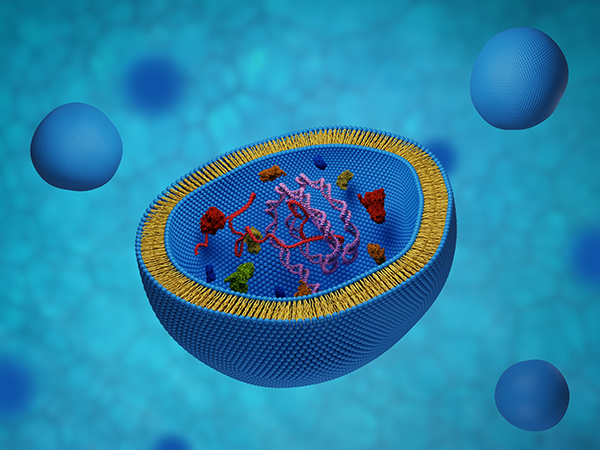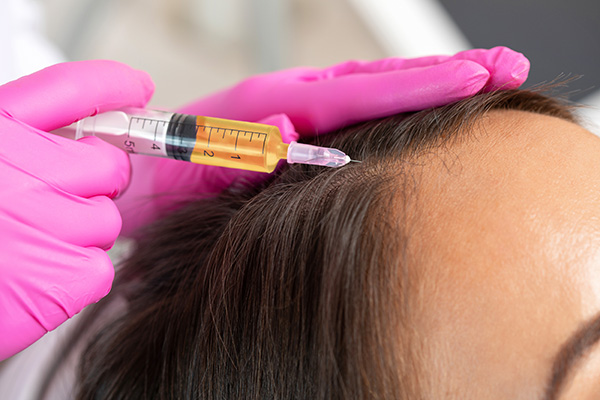
Experience the Hair Revival Magic of Exosome Therapy!
Key Features
Discover the Wonders of Exosomes!
Discover the Wonders of Exosomes!
Tired of hair loss affecting your confidence? Discover the power of Exosome Therapy, an emerging approach in the field of regenerative medicine and hair loss treatment. It is the latest highly effective and non-invasive solution to thicker, healthier hair.

Stimulate Hair Follicles
Exosomes contain abundant growth factors and signalling molecules that can stimulate dormant or weakened hair follicles, encouraging them to grow hair.

Reduce Hair Thinning
By promoting the growth of new cells and forming new blood vessels, exosomes help reduce the thinning of existing hair.

Enhance Hair Quality
Exosome therapy can improve the overall quality and health of the hair, making it thicker, stronger, and more vibrant.
Experience the Transformative Power of Exosome for Hair Restoration
Experience the Transformative Power of Exosome for Hair Restoration
Experience the transformative power of
Microneedling with Dermapen
Experience the transformative power of Microneedling with Dermapen

BEHIND THE SCIENCE
Exosomes are tiny vesicles naturally produced by cells, including stem cells such as hair follicles. They contain a variety of molecules, such as proteins, lipids, and nucleic acids that can communicate with other cells and influence their behaviour. As a result, they can promote cell growth and repair, stimulate hair follicle cells, and improve hair thickness and density. Exosomes can also help to reduce inflammation and oxidative stress, which are both factors that can contribute to hair loss.
When exosomes are applied topically or with microneedling or injected into the scalp, they penetrate the outermost layer and deliver their beneficial molecules directly into the hair follicles. This can help to improve the overall health of the scalp and hair follicles, leading to thicker and healthier hair growth.
- Scar Treatment Setting with maximum 3mm depth
- Advanced Oscillating Vertical NeedleTM (AOVN) Technology
- Increased speed, precision and safety
- 16-needle cartridge glides smoothly over the skin
- No fluid backflow, no cross-contamination, and no drag
The Advantages of Eosome Therapy Over Alternative Treatments
Non-Surgical Approach
Exosome therapy is non-surgical and minimally invasive, making it a less risky and more comfortable option compared to more invasive surgical procedures like hair transplant surgery.
Natural Regeneration
Exosomes harness the body’s natural regenerative processes. They contain growth factors and signalling molecules that stimulate the growth of hair follicles and improve hair quality.
Safety and Compatibility
As exosomes are derived from carefully screened stem cells, there is a reduced risk of allergic reactions or rejection, making it a safer option.
Synergy with Other Treatments
Exosomes can complement other procedures and be combined with other treatments, such as Laser and light therapy, for comprehensive results.
Convenience and Minimal Downtime
As exosomes are derived from carefully screened stem cells, there is a reduced risk of allergic reactions or rejection, making it a safer option.
Potential Long-Term Benefits
Exosome therapy provides long-lasting results by addressing the root causes of hair loss and promoting sustained hair growth.
Our Gallery
Before & After

Frequently Asked Questions
Exosomes are tiny vesicles naturally produced by cells, including stem cells such as hair follicles. They contain a variety of molecules, such as proteins, lipids, and nucleic acids that can communicate with other cells and influence their behaviour.
Exosomes have been found to have potential benefits for hair restoration. They can promote cell growth and repair, stimulate hair follicle cells, and improve hair thickness and density. Exosomes can also help to reduce inflammation and oxidative stress, which are both factors that can contribute to hair loss.
When exosomes are applied topically to the scalp or injected directly into the hair follicles, they can penetrate the outermost layer and deliver their beneficial molecules to the deeper layers of the scalp and hair follicles. This can help to improve the overall health of the scalp and hair follicles, leading to thicker and healthier hair growth.
Overall, exosomes show promise as a natural and effective way to promote hair restoration. With effective treatment protocols, they offer a safe and non-invasive alternative to more invasive hair restoration procedures.
Exosome therapy for hair restoration works by harnessing the regenerative properties of exosomes to stimulate hair follicles, promote hair growth, and improve the overall health of the scalp and hair.
The procedure typically involves the following steps:
- Exosome Isolation and Collection: Exosomes are tiny vesicles containing a potent mixture of growth factors, cytokines, and microRNA. These bioactive molecules are essential for cell communication and tissue repair. Exosomes are harvested from a source, including your cells (autologous) or donor cells (allogeneic) that have been rigorously screened and processed to ensure safety and efficacy.
- Processing and Isolation: The collected exosomes are processed and isolated to extract the beneficial growth factors, cytokines, and signalling molecules. These bioactive substances play a crucial role in cell signalling and tissue regeneration. This concentration step ensures that the exosome solution is rich in regenerative components.
- Preparation of Exosome Solution: The isolated exosomes are then prepared into a solution that can be applied to the scalp. This solution contains a high concentration of growth factors crucial in stimulating hair follicles, promoting hair growth and revitalising the scalp.
- Application to the Scalp: The exosome solution is applied to the scalp using various methods, depending on the provider’s expertise and the specific treatment plan. Common methods include topical application or direct injections into the scalp. More effectively, microneedling can create tiny channels in the scalp, allowing for better absorption of the exosomes.
- Stimulation of Hair Follicles: Once applied, the exosomes stimulate the dormant hair follicles by activating key signalling pathways in hair growth. This stimulation encourages hair follicles to transition from the resting phase (telogen) to the active growth phase (anagen), leading to new, thicker, healthier hair strands.
- Improvement in Scalp Health: Exosome therapy promotes hair growth and enhances the overall health of the scalp. It can reduce inflammation, improve blood circulation, and support a healthier environment for hair follicles.
Exosome therapy for hair restoration offers several advantages, including minimal downtime, reduced risk of allergic reactions and the potential for long-lasting results. Depending on the individual's needs and goals, it can be used as a standalone treatment or in combination with other hair restoration techniques.
Exosome therapy for hair restoration is generally considered safe when performed by a qualified and experienced professional or specialist. Here are some key points to consider regarding its safety:
- Natural Components: Exosome therapy uses naturally occurring exosomes derived from stem cells that are carefully screened. These exosomes contain growth factors, cytokines, and signalling molecules crucial for tissue repair and regeneration. Exosome therapy is safer in terms of potential allergic responses compared to some other treatments.
- Minimally Invasive: Exosome therapy is a minimally invasive procedure involving topical application with microneedling or micro-injections into the scalp. This means there is minimal discomfort, downtime, and risk of complications compared to more invasive surgical hair restoration procedures.
- Expertise of the Provider: Choosing a qualified and experienced professional or specialist knowledgeable about exosome therapy is essential. An experienced provider will perform the procedure safely and effectively, reducing the risk of complications.
While exosome therapy for hair restoration is generally safe, individual responses and outcomes can vary. It is important to have a thorough consultation with a qualified provider who can assess your suitability for the treatment and provide personalised guidance based on your unique hair condition and medical history. They will also discuss the potential benefits and any potential risks associated with the procedure, allowing you to make an informed decision about the treatment.
Individualised Treatment Plans: The exact number of sessions of exosome therapy needed for hair restoration can vary from person to person and will be based and determined on several factors, including your unique hair condition, the patient’s goals, the severity of hair loss, and individual response to treatment.
Here are some general guidelines:
- Single Session: Some individuals may see noticeable improvements in hair growth and quality after a single session of exosome therapy. This may be sufficient for those with mild hair thinning or early-stage hair loss. However, results can vary, and additional sessions may be recommended for optimal outcomes.
- Multiple Sessions: For more significant hair loss or to achieve more comprehensive and long-lasting results. At Derm Design, we recommend a series of 3-6 exosome therapy sessions for maximum benefits. These sessions are typically spaced 2-4 weeks apart to allow time for the full benefits of each treatment to become apparent.
- Maintenance Sessions: After completing the initial series of treatments, some individuals opt for periodic maintenance sessions to sustain the results over time. These maintenance sessions can help prolong the benefits and maintain overall hair health.
It’s important to remember that individual responses to exosome therapy can vary. While some individuals may experience faster or more significant improvements in hair growth, others may require more sessions to achieve their desired results. Your healthcare provider will closely monitor your progress and adjust the treatment plan to ensure you achieve the best possible outcomes for your hair restoration goals.
Exosome therapy for hair restoration typically involves minimal downtime, making it a convenient option for individuals with busy lifestyles. Here’s what you can generally expect in terms of downtime and recovery after the procedure:
- Some individuals may experience mild discomfort at the injection or microneedling sites during or immediately after the procedure. This discomfort is usually temporary and can include mild soreness or tenderness. Although many patients find it unnecessary, over-the-counter pain relievers can help alleviate any discomfort.
- No Visible Scarring: Exosome therapy is minimally invasive and does not involve incisions or surgical procedures. As a result, there is no visible scarring left on the scalp.
- Minimal Redness and Swelling: A common side effect after exosome therapy is mild redness or swelling at the injection sites. This can be similar to the effects of a mild sunburn and typically subsides within a day or two. Applying a cold compress may help reduce redness and swelling.
- Resuming Normal Activities: Most patients can resume their regular activities shortly after the procedure. There is no need for extended downtime or restrictions on daily routines. However, it’s advisable to avoid strenuous physical activities, excessive heat exposure, or swimming in chlorinated water for a brief period as your healthcare provider recommends.
- Post-Treatment Care: Your healthcare provider will provide specific post-treatment care instructions to optimise your recovery and This may include guidelines on hair washing, certain hair care products, and sun protection measures to protect the scalp.
- Results Over Time: While there is minimal downtime immediately following the procedure, hair growth and improvement in hair quality often occur gradually over several weeks to months as the hair follicles respond to the treatment.
It’s essential to follow your post-treatment instructions diligently to ensure a smooth recovery to optimise your recovery and maximise the benefits of exosome therapy.
While the immediate downtime is minimal, it’s essential to have realistic expectations regarding the timeline for noticeable hair growth and be patient as the hair gradually improves. Additionally, attending any scheduled follow-up appointments is crucial to assess your progress and make necessary adjustments to your treatment plan.
The timeline for seeing results from exosome therapy for hair restoration can vary from person to person. Many individuals begin to notice improvements in their hair growth and quality within a few months of treatment, while others may experience more gradual progress depending on several factors, including your unique hair condition, the severity of hair loss, and individual response to treatment.
Here is a general timeline for what to expect:
- Early Results (2-3 Months): Some patients may notice initial hair thickness and quality improvements within the first 2 to 3 months after starting exosome therapy. This can include increased hair density and a reduction in hair thinning.
- Intermediate Results (3-6 Months): Between 3 to 6 months of treatment, more noticeable improvements may become evident. Hair follicles may enter the active growth phase (anagen), resulting in the growth of new, thicker, and healthier hair strands.
- Continued Progress (6+ Months): Continued progress and enhancement of the hair can occur beyond the initial 6-month period. The rate of improvement can vary, but many patients experience ongoing benefits over time.
Yes, exosome therapy for hair restoration can be combined with other hair restoration treatments to enhance overall results. Combining treatments is often referred to as a “multimodal” or “combination therapy” approach and is tailored to the individual needs and goals of the patient. Here are some common hair restoration treatments that can be combined with exosome therapy:
- Platelet-Rich Plasma (PRP): PRP therapy involves the extraction and concentration of platelets from the patient’s blood, which are then injected into the scalp. PRP contains growth factors that can complement the regenerative effects of exosome therapy, further stimulating hair follicles and promoting hair growth.
- Medications: Oral medications such as minoxidil (Rogaine) and finasteride (Propecia) are commonly used to manage hair loss. These medications can be used with exosome therapy to support and maintain hair growth.
- Topical Hair Growth Formulations: Some topical formulations, such as topical minoxidil solutions or serums, can be used with exosome therapy to enhance hair growth and promote overall scalp health.
- Low-Level Laser Therapy (LLLT): LLLT devices, such as laser caps or helmets, use low-level lasers or light-emitting diodes to stimulate hair follicles. When used alongside exosome therapy, LLLT can enhance the effects of treatment and improve hair growth.
- Hair Transplantation: For individuals with more advanced hair loss, surgical hair transplantation procedures, such as follicular unit transplantation (FUT) or follicular unit extraction (FUE), can be combined with exosome therapy to optimise results. Exosomes may aid in the healing and recovery process after transplantation.
Combining treatments can offer synergistic benefits and may result in more comprehensive and satisfying outcomes for individuals seeking effective solutions for hair restoration. The decision to combine treatments will depend on various factors, including the severity of hair loss, the patient’s goals, and their response to individual treatments. A qualified healthcare professional or specialist will conduct a thorough assessment and create a personalised treatment plan tailored to the patient’s unique needs.
The results of exosome therapy for hair restoration are often long-lasting, but they may not be permanent, as individual responses can vary. Several factors can influence the duration of the results, including the patient’s overall health, genetics, ongoing hair care, and the underlying cause of hair loss. Here are some key considerations regarding the longevity of results:
- Maintenance and Follow-Up: To extend and maintain the benefits of exosome therapy, periodic maintenance sessions may be recommended. These maintenance treatments can help sustain hair growth and overall hair health over time.
- Hair Care Practices: Proper hair care and maintenance play a significant role in preserving the results of hair restoration treatments. Following a recommended hair care regimen, including using suitable hair products and protecting the scalp from excessive sun exposure, can contribute to maintaining the health of the hair and scalp.
- Underlying Cause of Hair Loss: The underlying cause of hair loss can influence the duration of results. For example, exosome therapy may be particularly effective for addressing age-related hair thinning or mild to moderate hair loss. However, if the underlying cause of hair loss is genetic (androgenetic alopecia) or related to certain medical conditions, the progression of hair loss may continue over time, necessitating ongoing maintenance.
- Individual Variation: Individual responses to exosome therapy can vary, and while some individuals may experience longer-lasting results, others may require more frequent maintenance sessions to sustain their desired hair growth.
- Combination Treatments: Combining exosome therapy with other hair restoration treatments, such as PRP or medications, may enhance and prolong the results. Your healthcare provider can discuss combination treatment options based on your specific needs.
It’s important to have realistic expectations regarding the duration of results and to consult with a qualified professional or hair specialist for a personalised assessment and treatment plan. They can guide the recommended frequency of treatments and maintenance to help you achieve and maintain the best possible outcomes for your hair restoration goals.
PROS & CONS
Pros:
This treatment is an advanced yet natural and minimally invasive technology for hair restoration. It offers several advantages by harnessing the regenerative properties of exosomes to stimulate hair follicles, promote hair growth, and improve the overall health of the scalp and hair. It is a safe, quick and painless treatment with minimal downtime, allowing you to return to your life in no time.
Cons:
This treatment might cause some discomfort and swelling. Your scalp might be sensitive afterwards. You might get different results each time. It is essential to have realistic expectations regarding the timeline for noticeable hair growth and be patient as the hair gradually improves.
Overview
Treatment Time
60 minutes
On Set Results
10 days
Treatment's Downtime
Minimal
Result Duration
Depends on skin condition
Potential Side Effects
Minor Bruising
Anaesthetic Required?
Topical
SEE WHAT OUR
PATIENTS SAY




SEE WHAT OUR
RADIANT PATIENTS SAY



OUR EXTENSIVE EXPERIENCE

Over Two Decades of Skincare Experience
At Derm Design, we offer all-encompassing care for a wide range of skin, hair and nail concerns. Some of the commonly encountered skin conditions we treat include acne, melasma, and rosacea.
Furthermore, we stay at the forefront of aesthetic treatments, utilising cutting-edge technology to provide the latest anti-ageing solutions.
CLAIM 20% OFF YOUR FIRST TREATMENT WITH DR MILLER TODAY
Share your information for a 20% DISCOUNT on ALL TREATMENTS during your first visit. [Check your spam folder and contact us at info@derm-design.com if you don’t receive your code]

